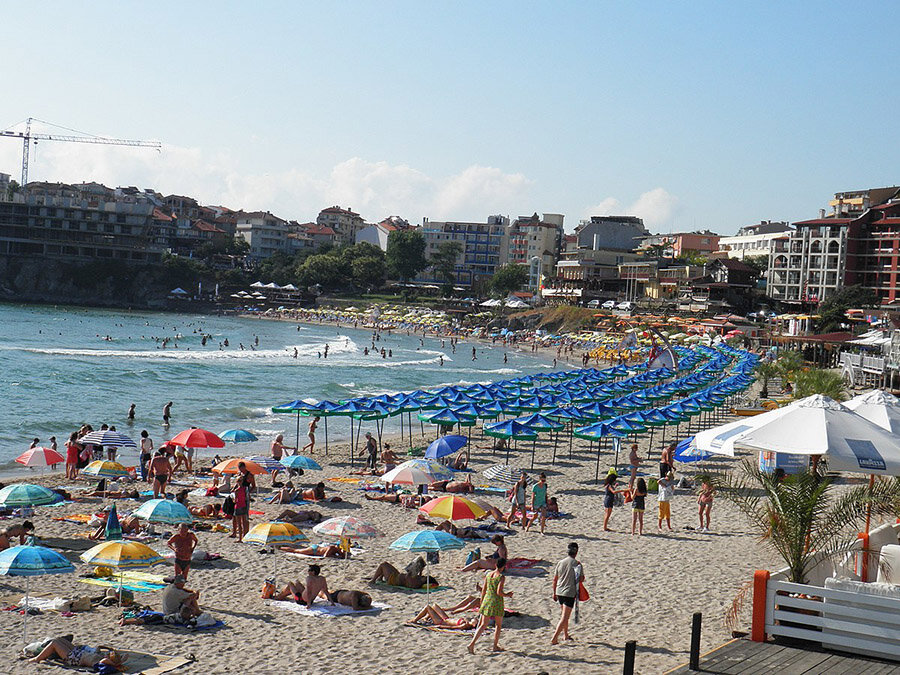читайте также
 Italy May End Tax Relief on Rental Income: What It Means for Landlords and Investors
Italy May End Tax Relief on Rental Income: What It Means for Landlords and Investors
 Luxury Travel Takes Off: How Demand Is Changing and Where to Find ‘Quiet Luxury’
Luxury Travel Takes Off: How Demand Is Changing and Where to Find ‘Quiet Luxury’
 Airbnb shifts all fees to property owners
Airbnb shifts all fees to property owners
 Most Punctual Airlines of September 2025: Who Arrived on Time and Why It Matters
Most Punctual Airlines of September 2025: Who Arrived on Time and Why It Matters
 Ten Years to a Passport: New Citizenship Rules in Portugal
Ten Years to a Passport: New Citizenship Rules in Portugal
 Top 25 World Economies 2025: Who Shapes Global Growth
Top 25 World Economies 2025: Who Shapes Global Growth
Real Estate / Вusiness / Investments / Analytics / Reviews / Bulgaria / Real Estate Bulgaria 28.03.2025
Resort Real Estate in Bulgaria: Growth, Risks, and Trends in 2025

In 2025, Bulgaria’s real estate spotlight is firmly on resort properties along the Black Sea coast. Prices are climbing, developers are becoming more active, and buyer interest is on the rise. However, the situation remains mixed — growth is paired with ongoing issues related to rental yield, regulation, and transaction transparency.
Prices and Popular Locations
According to Investor.bg, prices for high-quality properties in top summer resorts like Sozopol have for the first time exceeded €2,000 per m², showing annual growth of up to 30%. In some cases, prices reach €2,800. Despite this, resort property remains more affordable than urban real estate — prices per m² are still 20–30% lower than in Sofia.
The most in-demand units are turnkey one- and two-bedroom apartments, priced between €120,000 and €180,000. Many buyers prioritize combining leisure and remote work, while short-term rental potential is also key, as noted by real estate consultant Dobromir Ganev.
Sozopol remains one of the top destinations thanks to its climate, infrastructure, cultural appeal, and consistent tourism. The city currently has four major new developments underway, catering to a wide range of budgets.
Other popular areas include Varna, Nessebar, Burgas, Sveti Vlas, Sunny Beach, Ahtopol, and Byala. Prices vary by region: from €900/m² in the north to €2,500 in Varna. In central Burgas, prices reach €1,790, while the southern coast ranges between €1,200–1,500. In Nessebar and Sunny Beach, even older, non-maintained buildings that used to sell for €500–600/m² are now going for over €1,000, according to Borislav Tochevski of Domex.
Most buyers are Bulgarian citizens, including expats. The typical profile: 35–45 years old, working in business, law, medicine, or management. Ready-to-move-in apartments with amenities (pools, security, parking) are most in demand. Interest is also growing among digital nomads and younger buyers seeking summer escapes by the sea.
Much of the attention is linked to Bulgaria’s entry into the Schengen Area, which has boosted foreign buyer interest and the potential for further price growth.
Market Challenges and Risks
Bulgaria’s resort property market is largely seasonal. Outside summer months, many towns empty out, infrastructure closes, and rental income becomes unreliable. Owners still face year-round costs: taxes, repairs, and maintenance.
Rental yields remain low. According to Global Property Guide (Jan 2025), Sofia offers just 4% annual yield. Analysts at Colliers predict declining investor demand, shifting toward owner-occupied purchases.
There are also systemic legal and administrative issues. Many buildings still lack Act 16 — the final occupancy permit — meaning living there is technically prohibited. There is no centralized property registry, complicating due diligence and enabling fraud.
Buyers are also becoming more price-sensitive. Since late 2024, demand for discounts has grown. According to Imoteka, many clients are requesting €5,000–10,000 reductions for properties priced over €200,000. Sellers remain reluctant to lower prices, expecting long-term appreciation.
A new regulation from the Bulgarian National Bank now limits mortgages to 85% of the property’s value, and monthly payments cannot exceed 50% of the borrower's income — potentially cooling demand, especially as rates rise.
Bulgaria’s future entry into the eurozone could drive prices even higher, but also reduce affordability for some buyers. Russian citizens, for instance, face currency transaction restrictions that complicate deals.
Conclusion
Bulgaria’s resort property market in 2025 is showing signs of revival and steady demand. However, investors must remain cautious. Seasonality, low rental returns, legal barriers, and cost increases remain critical concerns. While price trends and tourism inflows look promising, each deal requires careful risk assessment and a long-term strategy.
Подсказки: Bulgaria, real estate, resort property, Black Sea, investment, prices, Sozopol, Varna, Burgas, Nessebar, Schengen, 2025, risks, rental yield, eurozone





